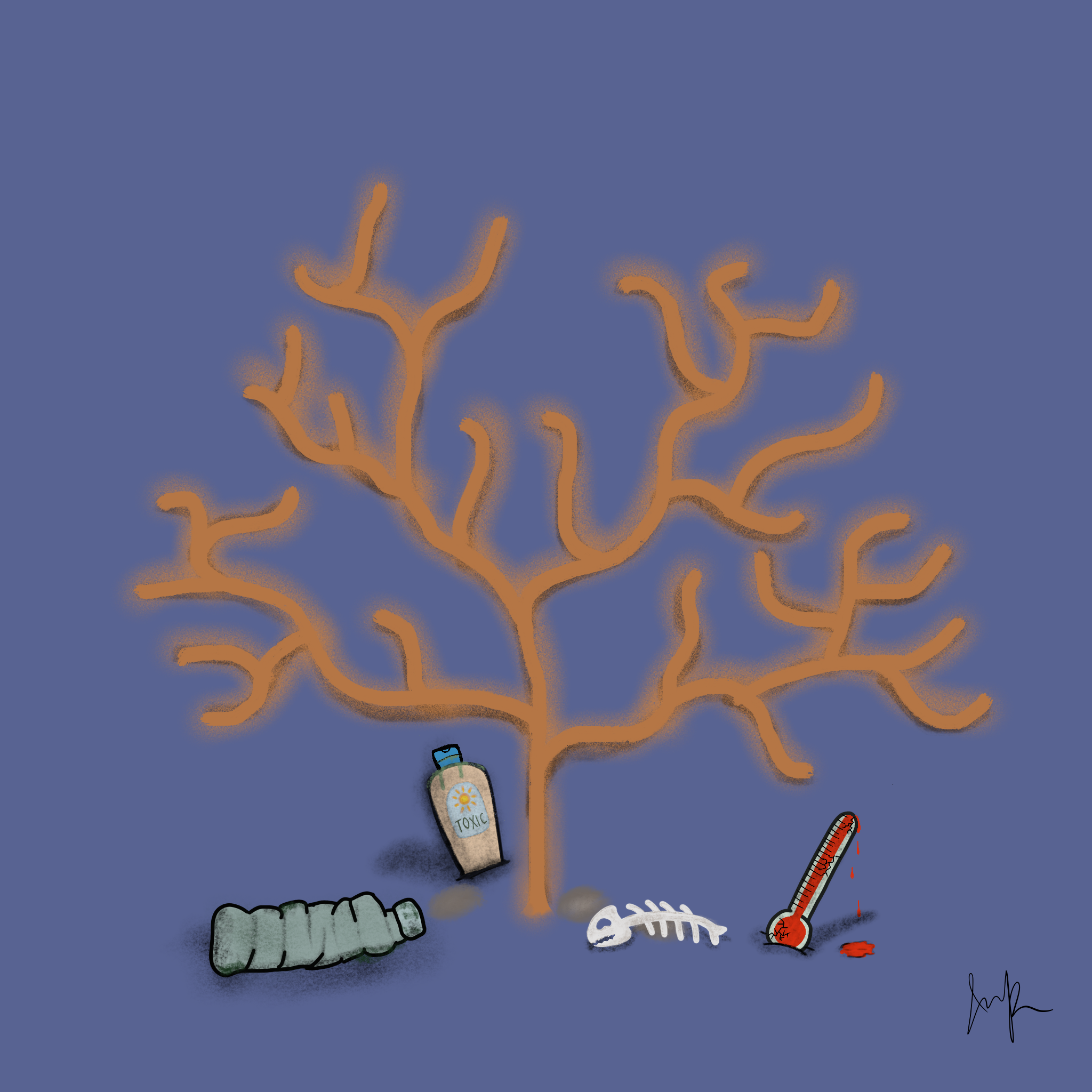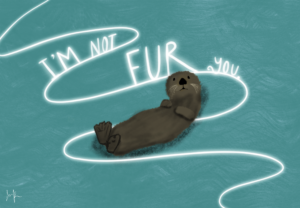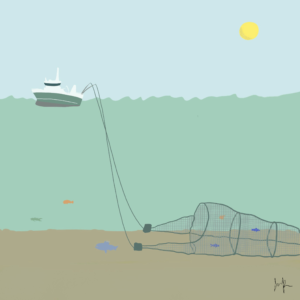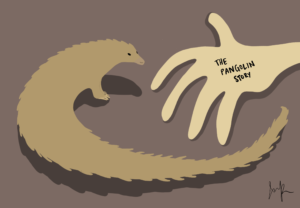Illustrated by Julianne Park. All rights reserved.
Look around. The lemon-colored tentacles and the nematocyst wriggle and dance with the rhythm of nature. Thousands of little orange and green fish swim in and around the rocks and the structure of the reef. There is a melody like a song in the waters; the clams gently rocking, the kelp swaying, and a small Blue Coral Crab hobbles down a sandy slope. All in harmony.
The coral reefs provide a home to millions of creatures. But did you know that coral are animals? Do you see the tiny colored tentacles or flower-shaped fingers on a coral reef? Those are called polyps. Polyps are colonial animals that sit on top of the calcium carbonate structure, or basically the skeleton of the coral. The polyps take in food, sometimes fish or small marine critters with their stinging tentacles, but mainly nutrients and plankton through their mouths. They also lay down layers of calcium carbonate to build the reef.
Coral also live in a symbiotic relationship with symbionts, and in this case, with zooxanthellae or algae. The algae sit in the coral’s cells and photosynthesize by taking in carbon dioxide, water, and sunlight and producing oxygen and sugar. The sugar supplies enough food for both the algae and the coral. The zooxanthellae are also the reason why corals are colorful.
Unfortunately, human activity is destroying these beautiful animals and marine ecosystems. The burning of fossil fuels and other human activities emit gases like carbon and methane into the atmosphere. So why is this bad?
The greenhouse effect is a phenomenon in which greenhouse gases trap heat. This effect is natural and beneficial for the planet as it keeps the earth warm and prevents freezing. However, with increased greenhouse gases, the planet overheats and warms. In turn, the ocean also heats up to a temperature at which coral reefs and many other species can not thrive. Coral reefs are now disappearing.
Coral bleaching is one main consequence of human intervention with marine life. Algae are expelled from the coral’s tissues as a stress response to heated water temperatures. Without the algae, the coral loses its color, and you’re basically left seeing the skeleton of the coral. Although the coral remains alive, it is difficult to recover from bleaching and will most likely die soon.
Coral bleaching can be caused by water temperatures that are too low or too high, polluted water, or contact with freshwater through floods or other ways.
Bleaching is not a matter to be ignored. In 2005, according to the NOAA in their article, “What is Coral Bleaching?“, the United States “lost half of its coral reefs in the Caribbean in one year due to a massive bleaching event” (“What is Coral Bleaching?”). If human activity continues in this detrimental way, how much of our coral reefs will be gone in ten years? Twenty years?
So now, you are probably thinking: Yeah, yeah, I get it. Corals are in danger. But what now?
And that is an excellent question; because we have a lot to do.
One main problem is the emissions from fossil fuels, which are heating up the oceans and the atmosphere. We have the right to ask for the representation of our voices and beliefs. We need to demand immediate action from the government now.
- You can write letters to your government officials demanding action. We need to switch from nonrenewable fossil fuels to sustainable renewable energy sources.
- Unsustainable fishing has become a severe problem, consequently destroying ocean ecosystems like coral reefs and the extinction of many marine species. Destructive fishing methods include bottom trawling, dredging, and long-lining. Choose sustainable seafood, limit your seafood intake, or try removing seafood from your diet completely!
- Use eco-friendly sunscreen. Choose sunscreen or other cosmetics that do not have detrimental chemicals, such as oxybenzone and octinoxate, which harm coral reefs and the ocean.
- Do not touch coral reefs when diving. Leave them on the reef.
- Conserve water and energy daily. For example, waste less water during showers or switch to more efficient and longer-lasting light bulbs. Alternatively, the next time you need to go to your nearby gym, take the bike or walk instead. All these efforts will help stop climate change and global warming.
- Join beach clean-ups or start clubs!
- Educate and spread awareness.
Whatever it takes, know that your contributions do matter and help save the ocean and our coral reefs.
https://www.change.org/p/save-coral-reefs-reduce-greenhouse-gas-emissions-now
https://www.change.org/p/australian-government-help-stop-coral-bleaching-in-our-reef
Works Cited
National Ocean Service. “What Is Coral Bleaching?” Noaa.gov, Noaa, 5 Nov. 2020, oceanservice.noaa.gov/facts/coral_bleach.html.
The views and opinions expressed are those of the authors and do not necessarily reflect nor represent the Earth Chronicles and its editorial board.














